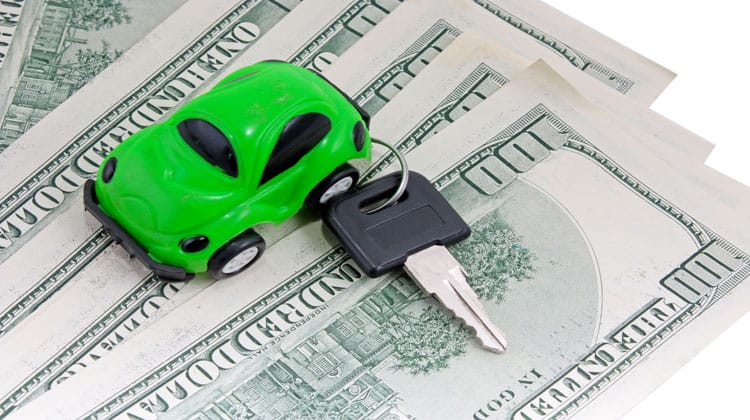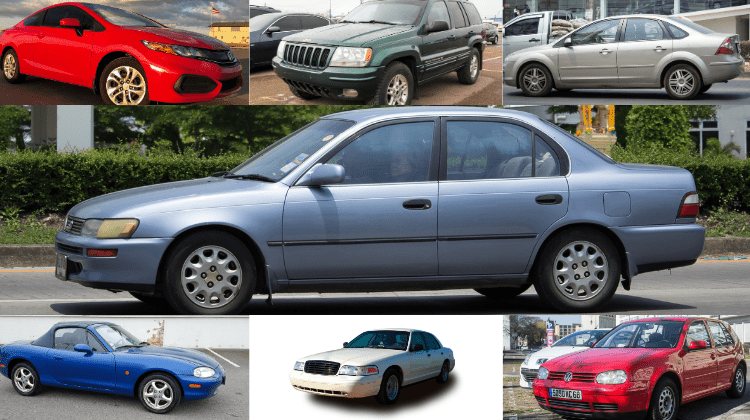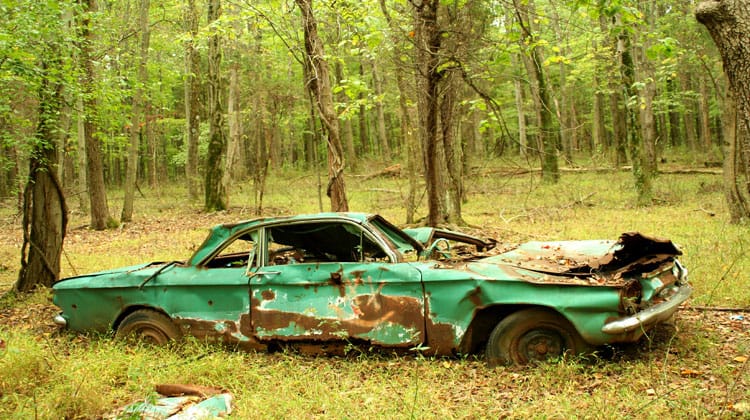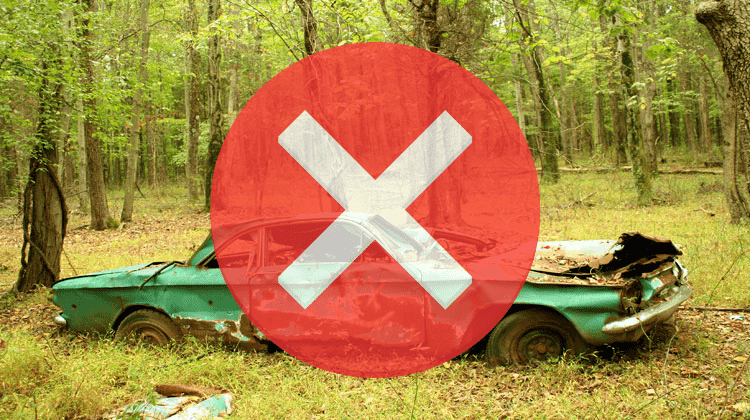THIS POST MAY CONTAIN AFFILIATE LINKS. PLEASE SEE MY DISCLOSURES. FOR MORE INFORMATION.
Beater cars are a great option if you need reliable transportation and have a limited budget.
But buying a cheaper, older car can be tricky. These cars often hide numerous issues that can transform your deal into a disaster.
So, what are the best cheap beater cars that functions properly?
We talked to several mechanics to understand what to look for and watch out for in older cars.
These mechanics also share the 15 reliable used cars they would buy to save money.
15 Beater Cars That Last
What Is A Beater Car?

If this is the first time you’ve heard of a beater car, the term itself can be confusing.
However, the concept is relatively easy to understand.
Simply put, a beater car is often an older, higher-mileage vehicle that is fully functional.
Many call them beaters, but others have different names, like:
- Jalopy
- Junker
- Clunker
- Banger
- Rust bucket
- Bucket of bolts
- Rusty old ride
- Cheap cars
Why might someone choose a beater car instead of a brand new car or a certified pre-owned car?
People prefer these cars for many reasons: good fuel economy, reliable function, and durability.
And when something does break, replacement parts are easy to find, making repairs cheap and easy.
This ensures you have a car with the basic performance you need to get around.
Let’s first focus on the beater cars mechanics suggest. Later, we’ll explore more reasons people buy them.
15 Best Beater Cars To Consider


Now we get to the fun part: discussing the best beater car for you.
There are various vehicles on this list, and everyone is looking for something different.
Some people want a car with great fuel economy. Others are most interested in a comfortable ride.
Some people need four-wheel drive in snowy winters. Others prefer fun cars in warm weather.
Here’s a list of reliable vehicles so everyone in the market can find the perfect beater for them.
#1. Honda Civic (All Years)
If you want to know what’s the best beater car to own, the Honda Civic could be it
It’s great on gas, fun to drive, and, depending on the trim level you choose, has enough cargo space to fit your gear.
And with proper maintenance, there is no reason why you can’t go 300,000 miles or more with it.
Digging into specifics, these cars are super reliable, meaning that it isn’t common to need repairs.
If you do, parts are plentiful and they are easy to work on.
Civics get excellent gas mileage too, up to 40 mpg on the highway.
Because they are so popular, resale value tends to be higher than most other vehicles.
And if you want a faster ride, consider the Civic SI.
Now for the drawbacks.
The biggest is the Civics from the 90s tend to be among the most stolen vehicles in the U.S.
To protect yourself, you should add an anti-theft device and be smart about locking your car.
Another issue is the automatic transmission in the early 2000s models.
If you are looking at these, you might want to consider a manual transmission.
Finally, be cautious with the SI model.
Many kids modified these cars and as a result could have a lot of issues. Have a reliable mechanic inspect this model, especially the engine and transmission.
#2. Toyota Camry (2002 – 2006)
Toyota has always been at the top of the list for reliable transportation.
Older Toyota Camry’s offer a comfy ride for your daily commute at a good price.
It is great on gas, allowing you to make fewer stops at the gas station. And because of its popularity, you can easily find cheap parts.
As a bonus, there is enough room for your family.
Newer models offer extra safety and entertainment features, but they are priced higher than older models.
As for the drawbacks, some owners report hesitation or early transmission wear, particularly on poorly maintained 4-speed automatics.
Also, some V6 models (2002-2003) were known for sludge build-up if oil changes were neglected, so check the service history carefully.
#3. Toyota Corolla (All Years)
Like the Civic, the Toyota Corolla could be one of the best small cars.
If you keep your eyes open, you can see various generations of this car on the road today.
As a result, parts are plentiful, making it cheap to repair and maintain.
You can’t go wrong with any of the Toyota Corolla models, making it the right beater car for most drivers.
As for things to look out for, older Corollas (especially pre-2003) may suffer from underbody and wheel well rust, especially in snowy climates.
Also, some 2009–2013 models are known for excessive oil burning (especially with the 2ZR-FE engine), so keep an eye on oil levels between changes.
Finally, lower trims often lack features like ABS, side airbags, or cruise control in earlier generations.
It’s worth shopping for LE or higher trims if possible.
#4. Ford Focus (2008 – 2011)
Pardon the pun, but this generation Ford Focus is the one to focus on.
Ford improved reliability during the 2008-2011 model run, fixing the problems that plagued previous generations.
And with various trim levels, you can find one that has all the features you need and have enough room for most people.
Things to look out for include the 4-speed auto is less reliable and less efficient than the manual.
Some owners report jerky shifts or early wear.
Also, the rear suspension uses a solid rear axle rather than an independent suspension, which slightly reduces ride comfort and handling in rough conditions.
#5. Nissan Sentra (1991 – 1997)
The 1991 to 1997 Nissan Sentra is often overlooked, but it deserves a spot on any list of fun beater cars.
With its lightweight chassis, ultra-simple design, and surprising reliability, it offers a unique mix of practicality and driving enjoyment that’s hard to beat at this price point.
It was build with Nissan’s bulletproof 1.6L inline-4, known to exceed 200,000 miles with basic maintenance.
Plus with minimal electronics, it is easy for any weekend mechanic to work on and fix small issues, saving you money on maintenance.
Finally, it offers up to 35 mpg on the highway, so it could be your daily beater car if you do a lot of highway driving and want to save money on gas.
Of course, there are some drawbacks.
First is rust. Watch for underbody and strut tower rust, especially in vehicles from snowy or coastal areas.
Also it lacks modern safety features. No airbags in some trims, no ABS, and minimal crash protection by today’s standards.
Finally, they are becoming harder to find, mainly because so few were originally sold.
So, if you find one reasonably priced, take advantage of it.
#6. Honda Accord (1994 – Present)
If you’re hunting for cheap, reliable, and well-built beater cars, the 1994–1997 Honda Accord deserves serious consideration.
Honda was already known for making cheap reliable cars, but the mid-’90s Accords marked a turning point where reliability, build quality, and refinement all hit a sweet spot.
With its 2.2L inline-4 engine, the Accord offers good fuel economy without sacrificing on power.
And as with many of the cars from this decade, they are easy to maintain.
The only downsides to consider are some older parts are fading out.
While you can still get most parts, some trim and body panel parts are becoming harder to find.
Also, it is wise to stick with the 4 cylinder engines, as the V6 versions are known to have issues.
#7. Chevrolet Cavalier (1995 – 2005)
If you are looking for the best beaters cars under $1,000, the Chevy Cavalier is your solution.
With proper maintenance, the basic 4-cylinder engine can go over 200K miles.
Parts are plentiful, and most models get 26–34 MPG, depending on engine and transmission.
Of course, when get a beater car for $1,000, you shouldn’t be expecting luxury.
The interiors of these cars feel cheap, because they are.
Also, the automatic transmission can develop issues, especially if neglected, and ride comfort isn’t the best.
Finally, even those these cars come with airbags, these cars fare poorly in crash tests compared to modern vehicles.
#8. Ford Crown Victoria (2005 – 2008)
Most cars have a stigma attached to them, which is undoubtedly true with the Crown Victoria.
If you see this Ford on the road, you immediately slow down, thinking it is an unmarked police car, as these are the cars most police departments used.
They are among the best beaters to own because of their low maintenance costs and ability to handle almost anything.
Specifically, these cars have body-on-frame construction, which is rare in passenger cars.
This makes repairs after minor accidents simpler and cheaper.
These cars have a comfy ride and the police Interceptor (P71) versions are overbuilt, with heavy-duty cooling, suspension, brakes, and alternators.
As for drawbacks, some models (2003-2011) had axle failures. Make sure recall work was completed.
These cars are also not great when it comes to fuel economy.
Expect 15–18 MPG city, 23–25 highway at best — worse in city or with a lead foot.
Finally, Many on the used market are ex-cop cars or taxis with hard lives and minimal maintenance.
So make sure you get it checked out before buying one.
#9. Mercury Grand Marquis (1998 – 2002)
If a Ford Crown Victoria is hard to find, consider its cousin, the Grand Marquis.
Similar in many ways, this vehicle is big enough to fit most families.
It also has the body on frame construction, making repairs easier.
The downsides include the big V8 engine, which decreases fuel economy.
But if that isn’t a concern, this could be the car for you.
Also, at over 17 feet long, it’s not fun to park or maneuver in tight urban spaces.
#10. Lincoln Town Car
The Town Car is another relative of the Ford Crown Vic and the Grand Marquis.
It has the most luxurious ride of the cars on this list.
It’s also big, especially if you opt for the extended L wheelbase version.
Like the others, it has a V8 engine, meaning if you care about getting good gas mileage, skip this one.
Also, some models have rear air suspension, which is great when it works, but expensive to fix when it fails.
As a result, many owners convert to coil springs to save money.
#11. Ford Escort (1997 – 2003)
The third generation Escort is the cream of the crop, but the second generation from 1991 – 1996 can also be an option.
It’s a simple and reliable car that can easily get you 200,000 miles.
And as with most of the cars on this list, the Escort is cheap to insure, saving you money.
Some things to consider include is the car is small and lightweight, so if you plan to use this vehicle as your daily driver in snow, make sure you pay for winter tires.
Also, the automatic transmission can be weak, and is known for early wear or failure if not properly maintained.
#12. Mazda Miata (All Years)
The Mazda Miata is an excellent option for car enthusiasts.
It’s a fun, sporty car that has excellent fuel economy.
Arguably, the best models of this car are the 2004 Maszdaspeed Miata and the 1999 MX-5 10th anniversary edition.
Compared to the standard five-speed, the ’99 version gets you a six-speed manual transmission.
the NA (1990–1997) and NB (1999–2005) generations are known to go 200K+ miles with basic maintenance.
Downsides include two seats only, but if you are looking for a family car, you most likely aren’t even considering this car.
You also sit low, which adds to the fun, but can be uncomfortable for taller drivers or tough in traffic.
#13. 1998 – 2003 Ford F-150
If you are interested in the best beater truck, the Ford F-150 is a great option.
In reality, you could pick almost any older version of this vehicle to drive.
However, most mechanics recommend model years between 1998 and 2003.
These trucks are high-quality, meaning they are built to last.
They are available in extended and crew cab versions and offer a V8 engine.
Speaking of the engine, the 4.2L V6 and 4.6L V8 are generally durable; the 5.4L Triton V8 can last, too, with proper care.
With an 8,000-pound towing capacity, and available as regular cab, extended cab, and crew cab — plus short or long bed versions, it is a great truck for someone with an active lifestyle.
You could even use the truck with a trailer and make money.
Downsides include poor fuel economy, and rust problems.
Rocker panels, cab corners, and the bed can rust badly in northern climates.
Finally, the 4-speed automatic transmission can wear out early, especially on trucks used for towing.
#14. Ford Ranger (1998 – 2011)
If the F-150 is too big for you, consider its smaller sibling, the Ranger.
It came in either a 4-cylinder engine or a beefier V6.
The 2.3L 4-cylinder and 3.0L V6 Vulcan engines are known for long life when maintained.
The 4.0L V6 offers more power but with higher fuel use.
Can can also tow up to 5,800 lbs (with the 4.0L V6), which is solid for a compact pickup.
Most recommend the V6 engine for a blend of good fuel mileage and power.
Downsides include frame rust, fuel economy, and ride comfort.
Bouncy suspension and noisy cabins make long trips less pleasant compared to modern trucks.
#15. 1995 Jeep Grand Cherokee
This four-wheel drive SUV is the perfect winter beater.
This car is available with Jeep’s Quadra-Trac full-time 4WD system, which makes it great in snow, mud, or off-road trails.
It can handle all types of bad weather, from rain to sleet and snow.
As for the engine, the 4.0L inline-6 is legendary for durability and can surpass 250,000 miles with good care.
A V8 was also available for more power.
Downsides include poor fuel economy, electrical gremlins, and rust.
It should be noted that the automatic transmissions, especially behind the V8, are a weak spot if not maintained.
You found a gem if you come across an Orvis Limited Edition for sale.
Pros and Cons of Beater Cars
Benefits Of Driving A Cheap Car


Aside from the above benefits, driving an older car has other benefits.
Here are some of the biggest.
#1. You Save Money Upfront
Are you a big fan of saving money?
If so, this is one of the top reasons people buy a beater car instead of a new one.
Beater car prices generally range between $2,000 to $8,000, meaning you can get a car dirt cheap.
This means no monthly car payments or worrying about credit, two things you usually deal with when buying a new car.
You also save money when operating the vehicle and buying parts for it.
This was the strategy I used when I began driving.
I bought a 10-plus year old Honda Accord and sold it with 250,000 miles on it. (Side note: the old man who bought it from me drove it around town for another five years.)
Then I bought another 10-plus year old Accord and drove it for four years.
All told, I estimate I saved over $50,000 doing this.
#2. You Don’t Worry About Depreciation
When you drive your new car off the lot, it starts losing value.
The longer you drive it, the more value it loses.
This can be an issue since it is now worth less than it used to be. You will get less for it when you sell or trade it in.
You don’t have to worry about depreciation when you purchase a cheap car and get a great deal.
In fact, sometimes you can drive a cheap beater for a few years and sell it for the same price you paid.
My best friend bought a Civic for $5,000, drove it for four years, then sold it for $4,900.
#3. You Have A Reliable Car
The problem with new cars is that you have to wait for reviews of these vehicles to learn more about how they operate and if they’re worth the investment.
With older cars, you already know the best used cars, as they’ve been around for a while. You know what they have to offer and how they perform.
This gives you a significant advantage when car shopping.
#4. You Save Money On Taxes And Insurance
Taxes and car insurance are more costs of owning a car, but they don’t have to be a burden if you choose a beater car.
Beaters are cheap to insure; in most cases, you can skip comprehensive coverage to save even more money.
You also save money on taxes when you buy the car, as the purchase price is lower than a new car.
Disadvantages Of Driving A Beater Car


Considering this, buying a car is a major investment, even when you save money by purchasing a beater car.
What are some things you need to know before springing for an old car?
#1. Your Beater Lacks Modern Safety Features
Buyers often overlook things like Bluetooth capability and heated seats when you’re saving tens of thousands of dollars on a car.
However, not having modern safety features can be more difficult to overlook.
Over the years, safety features have improved, making it possible to feel safer and more confident when driving.
The problem with beater cars is that they don’t offer the same features, and the construction might not be as good as today’s vehicles.
This is something to keep in mind when you’re buying a beater car.
The good news is you can pay for some upgrades, like a backup camera and Apple CarPlay.
However, you might have to sacrifice other features, such as blind spot monitoring and lane departure warnings.
#2. Driving Long Distances Can Be Problematic
A beater car is perfect for short commutes and driving around town.
However, longer distances can be difficult as these cars might be more prone to breaking down.
However, as long as you keep up with maintenance and do a thorough inspection before taking a road trip, your beater should make it.
#3. You Need To Stay on Top Of Maintenance
Because beaters are old and have high mileage, you must stay on top of maintaining your vehicle.
If you ignore maintenance, your car could fail anytime, which could be dangerous to your health and safety.
These aren’t necessarily deterrents to getting a beater, but they should be in your mind while shopping for one.
Mechanic Jason D. from Pennsylvania says, “with older cars, it is critical you follow the maintenance schedule of the car. This includes oil changes and timing belts. You also want to pay particular attention to any drops of fluid under the car as seals and hoses can dry rot over time.”
How Do I Make Sure That I Buy The Right Beater?


Shopping for a beater is like shopping for any other car.
There are certain things that you want to look for when you begin looking at beater cars in your area.
Here are a few key areas that you should focus on.
#1. Low Mileage
Look for the lowest possible mileage so you don’t buy a car that will likely break down immediately.
While beater cars often have hundreds of thousands of miles, you should try to find ones under 150,000 miles.
#2. It’s In Working Condition
This might sound silly, but some people might try to find an incredible deal by purchasing a car that is not road ready.
While a radio isn’t necessary, functional brakes, tires, and lights are non-negotiable.
Make sure that the beater you want functions as well as possible and meets all your needs to drive safely.
If there are missing or damaged parts, look for another beater.
#3. Do Your Research
Take the time to know what you want in a car.
This will save you countless hours.
There is no point looking at beater cars when you don’t know the features and options you want.
Consider the brand of your car and the benefits it offers, and then start looking for it.
Be sure to take into account everything, too.
For example, is the beater of your choice fuel-efficient? Does it have the basic features you’re looking for? Being a little picky is never a bad thing.
#4. Have A Trusted Mechanic
Because you are buying an older car, you need to make sure someone who knows cars gives it a detailed inspection.
While this can be a hassle, you will be thankful you did this.
The last thing you want to do is pay for a car that doesn’t run or needs endless repairs.
As mechanic Ryan Z. of Texas says, “even if you are buying a car from a dealer, you want a mechanic not affiliated with the dealer to look over the vehicle. This ensures you have someone who has your best interest giving their expert opinion.”
#5. Don’t Focus on the Exterior
It can be easy to dismiss an ugly looking beater for a nicer car.
But don’t let appearances make your decision for you.
Even if the car has some scratches, it’s worth considering as long as it runs smoothly and passes inspection.
The reason is that you can get a cheaper price because most people will avoid it.
If you spot rust or paint bubbles, steer clear, as this could be a sign of bigger issues.
Frequently Asked Questions


What are the best beater cars under $1,000?
Any early 2000’s Toyota or Honda are good beater cars under $1,000.
Not only are they good on gas, but they will rarely break down.
If you are looking fro basic transportation at the lowest price, look into a late 1990’s or early 2000’s Chevy Cavalier or Ford Escort.
What are the most reliable beater cars?
Anything from Toyota – Corolla, Camry, RAV4 – will be reliable. The same is true with a Honda Civic, Accord, or CR-V are also extremely reliable.
Lexus, Acura, and Mazda are other brands to consider.
What makes a good beater car?
An old beater car that is a good value doesn’t have high mileage (look for less than 150,000 miles) and checks out with a mechanic.
Ensure there is no rust or paint bubbles on the exterior as well.
You also want to check to see if the car was in an accident or flooded as this could cause issues that your mechanic cannot see.
Finally, check price guides like NADA and Kelley Blue Book to ensure the asking price is within reason give the condition and miles driven.
What mileage is too high for a beater car?
There isn’t a single “too high” mileage number.
It depends more on the make, model, and maintenance history than the odometer reading alone.
Generally speaking, 150,000–200,000 miles is considered high mileage for most cars, but many well-maintained vehicles (like a Honda Civic, Toyota Corolla, or Ford Crown Vic) can comfortably exceed 250,000–300,000 miles.
So, don’t focus so much on the mileage, but rather the maintenance of the vehicle, as this is a better predictor for a reliable car.
Where to find a beater car?
You can find cheap beater cars in a variety of places, depending on your budget and how much work you’re willing to put into the search.
Some places include online marketplaces (Craigslist, Facebook Marketplace, and OfferUp), used car lots, auctions, and community boards.
I’ve found word of mouth to be a great option too.
Ask friends, family, or coworkers. Many people have an old “extra car” sitting around they’re willing to let go cheap.
Others have an older parent or grandparent who is no longer able to drive and is looking to get rid of the car.
Finally, don’t overlook estate sales.
These can be a great place to find low mileage cars in excellent condition.
How to inspect a used beater car?
When inspecting a beater car, always check for rust on the body and undercarriage, since it can be a dealbreaker.
Start the engine cold and listen for knocking, rough idling, or smoke from the exhaust.
Look for fluid leaks and make sure the transmission shifts smoothly.
Test the brakes, suspension, lights, windows, and A/C to confirm they work.
Finally, take it on a test drive at both city and highway speeds to catch any clunks, vibrations, or pulling.
Of course, even if you thoroughly inspect the car, you should still get a mechanic’s opinion before you buy.
Read the full article here














